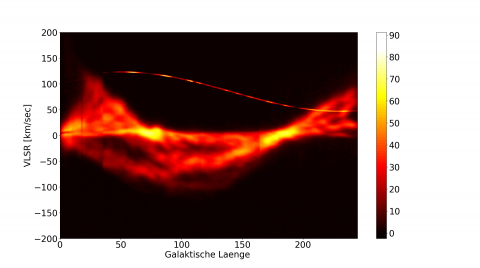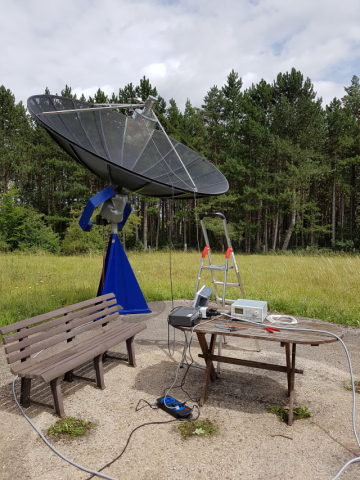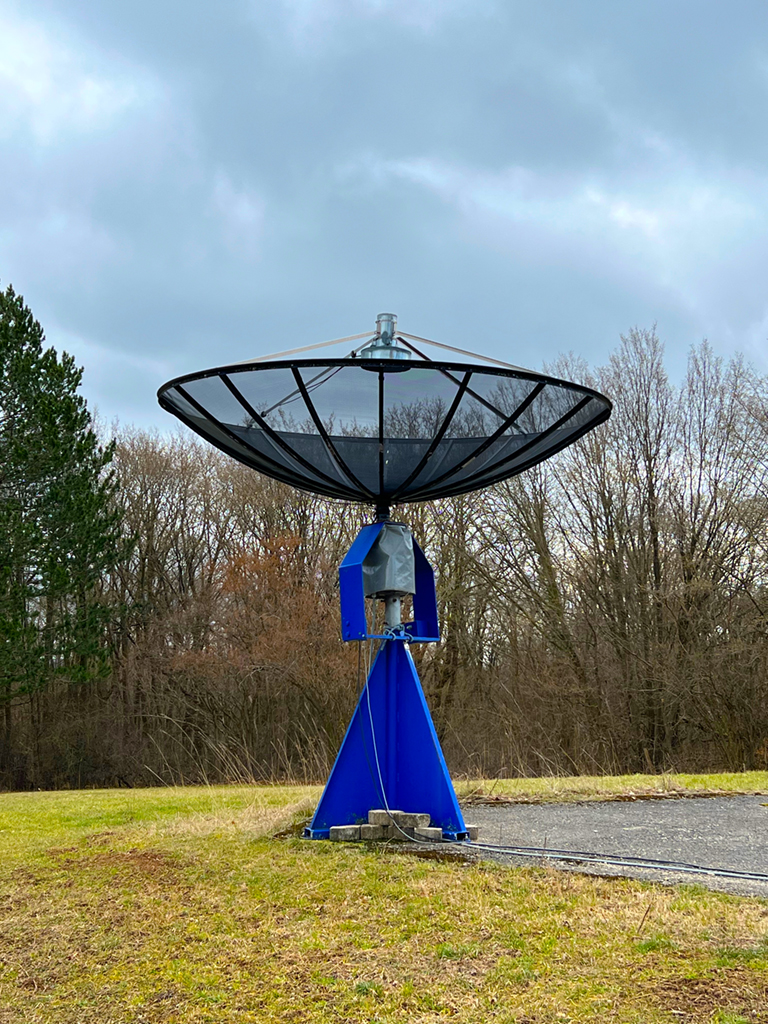The 3-m dish at Astropeiler Stockert is intended primarily for lab courses and other educational activities. From time to time it is also used for testing of components which are also used at our 25-m dish. This dish is designed to work at L-band and for 1420 MHz (21-cm) in particular to cover the emission of the hydrogen line. A comprehensive description of this instrument’s design can be found here:
The 3-Meter Dish Part 1: The Setup (PDF)
The 3-m dish is suited for a wide range of observation. First of all, there is the 21-cm line from hydrogen. One example is shown above where a scan of the galactic plane is shown. However, also weaker emissions like those from so called “high velocity clouds” can be observed. Even OH-masers can be detected to some extent. Besides such spectral sources, also continuum sources are observable. There is the “classic” Cassiopeia A of course. But even the radio galaxy M87 which became famous due to the image of the black hole can be seen as a weak signal. The characteristics and various observations are summarized in a paper. Another paper describes the observation of a pulsar which was accomplished with this telescope.
The 3-Meter Dish Part 2: Characterisation and Observations (PDF)
The 3-Meter Dish Part 3: Pulsar Observations (PDF)

“First Light” with the new 3-m-dish
On July 28, 2017, the fourth radio telescope of the Astropeiler started its test operation with a “First Light”. The first successful radio astronomical measurement with the new 3 m telescope was a complete success!
 |
 Messaufbau [Vergrößerung] Messaufbau [Vergrößerung] |
However, it was a long way to the successful test measurements, because an existing mirror, alone only with a rotor, does not yet make a measurement possible.

